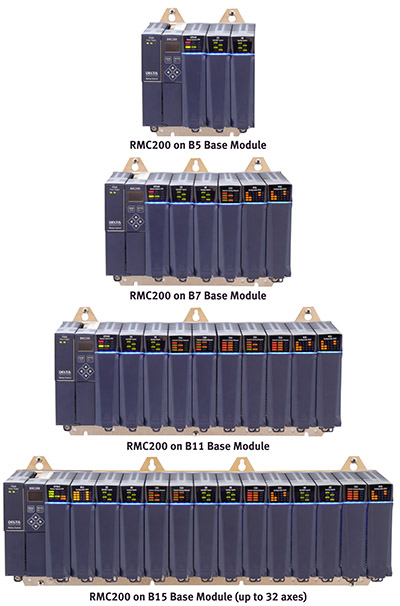
With the addition of the new B5 backplane, Delta’s RMC200 family supports a full range of motion systems.
Delta Computer Systems announces the availability of a new configuration option for the company’s newest controller, the 32-axis RMC200. With the addition of a new 5-slot backplane option, the set of available backplanes now supports base modules with 5, 7, 11 or 15 slots.
Each Base module has 1 slot for the power supply and 1 CPU slot. The B5 supports 3 I/O slots, the B7 supports 5 I/O slots, the B11 supports 9 I/O slots and the B15 supports 13 I/O slots. RMC200 controllers using the newest 5-slot B5 can be configured to handle up to 8 position control axes, while the B7, B11, and recently added B15 Base Modules allow for configurations up to 32 axes.
With the capacity to handle up to 32 closed-loop motion axes or data acquisition channels, a single RMC200 can manage the industrial motion and data logging needs for many production lines and test systems.
The RMC200 uses the same RMCTools software as the other Delta controllers—the RMC75 (1 or 2 axes) and the RMC150 (up to 8 axes). Delta RMCs have special capabilities for synchronizing the motion of multiple axes while logging data at motion loop speeds, enabling the construction of machines and test systems with scalable performance and quick production changeovers.
All Delta controllers can provide built-in dual-loop support for controlling pressure/force/torque as well as position/velocity/acceleration. The controller can transition smoothly between these control modes, enabling smooth, reliable motion.
“Panel space is a premium for some of our customers, and the full range of Base Modules makes it easier to use Delta’s newest and most capable motion controller for systems of varying sizes,” said Steve Nylund, Delta Computer Systems CEO.
Delta Computer Systems
www.deltamotion.com
Filed Under: Mobile Hydraulic Tips